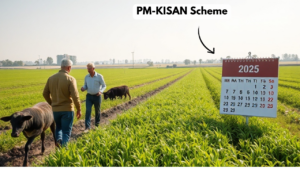In a significant move to ensure food security and improve the welfare of its citizens, the Jharkhand government has announced an updated Ration Scheme, starting soon, beneficiaries under the public distribution system (PDS) will receive 7 kilograms of grains and 2 kilograms of pulses every month. This initiative aims to combat hunger and improve the nutritional standards of economically weaker sections in the state.
A Step Toward Food Security
Jharkhand, known for its rich mineral resources and cultural diversity, has a large population dependent on agriculture and daily-wage labor. However, poverty and malnutrition remain significant challenges. This new scheme is designed to directly address these issues by ensuring that no family goes hungry due to a lack of access to basic food supplies.
Under the revised scheme, each beneficiary will receive 7 kilograms of grains, which may include rice and wheat, along with 2 kilograms of pulses such as lentils. This allocation ensures a steady supply of staple foods, which are essential for a balanced diet.
How the Scheme Works
The updated ration scheme will be implemented through the existing PDS network, which operates through a wide network of fair-price shops across the state. These shops distribute subsidized food and essential items to eligible families holding ration cards. The government has streamlined the process to ensure transparency and efficiency.
To avail of the benefits, beneficiaries need to ensure that their ration cards are updated and linked with Aadhaar numbers. This linkage aims to eliminate duplication and ensure that only genuine beneficiaries receive the benefits. The distribution process will be monitored closely to prevent corruption and pilferage.
Who Will Benefit?
The primary beneficiaries of this scheme are families living below the poverty line (BPL), who form a substantial portion of Jharkhand’s population. This update to the ration scheme also extends to Antyodaya Anna Yojana (AAY) cardholders, who are among the poorest of the poor. These families often struggle to meet their basic dietary requirements, and the scheme is expected to bring much-needed relief.
The inclusion of pulses in the ration allocation is particularly noteworthy. Pulses are a rich source of protein, which is crucial for overall health and development, especially in children and pregnant women. By addressing both calorie and protein needs, the scheme takes a holistic approach to combating malnutrition.
Government’s Perspective
The Jharkhand government has emphasized that this initiative is part of its broader commitment to social welfare and food security. Officials have stated that the scheme aligns with the state’s efforts to meet Sustainable Development Goal (SDG) 2, which focuses on ending hunger and achieving food security for all.
To support the implementation of this Ration Scheme, the government has allocated substantial resources. Warehousing facilities have been upgraded to store grains and pulses, and transportation systems have been strengthened to ensure timely delivery to fair-price shops.
Challenges Ahead
While the Ration Scheme is ambitious and well-intentioned, its success will depend on overcoming several challenges. One major hurdle is ensuring that all beneficiaries are aware of the updated ration scheme and the process to claim their entitlements. The government plans to launch awareness campaigns through local media and community outreach programs.
Another challenge is addressing issues of pilferage and corruption within the PDS system. While Aadhaar linkage helps reduce fraudulent claims, robust monitoring and accountability mechanisms are essential to ensure that the benefits reach the intended recipients.
Additionally, the logistical complexities of distributing pulses, which are more perishable than grains, need careful planning. Ensuring that pulses of good quality are consistently available at fair-price shops will require efficient supply chain management.
Public Response
The announcement of Ration Scheme has been welcomed by the public, especially by those who struggle with food insecurity. Many beneficiaries have expressed gratitude for the inclusion of pulses in the ration, which they say will improve their diets. Local NGOs and community leaders have also lauded the move, stating that it will have a positive impact on public health.
However, some concerns have been raised about the adequacy of the quantity provided. Critics argue that while the allocation is a step in the right direction, it may not fully meet the needs of larger families. They have called for periodic reviews of the Ration Scheme to ensure its effectiveness.
Looking Ahead
The Jharkhand government’s updated Ration Scheme has the potential to make a significant difference in the lives of millions of people. By providing 7 kilograms of grains and 2 kilograms of pulses every month, it addresses both hunger and nutritional deficiencies. However, sustained efforts are required to ensure that the scheme is implemented effectively and reaches all eligible beneficiaries.
In the long term, the government’s focus on food security must be complemented by initiatives to create sustainable livelihoods and improve agricultural productivity. By addressing the root causes of poverty and malnutrition, Jharkhand can pave the way for a healthier and more prosperous future for its people.











